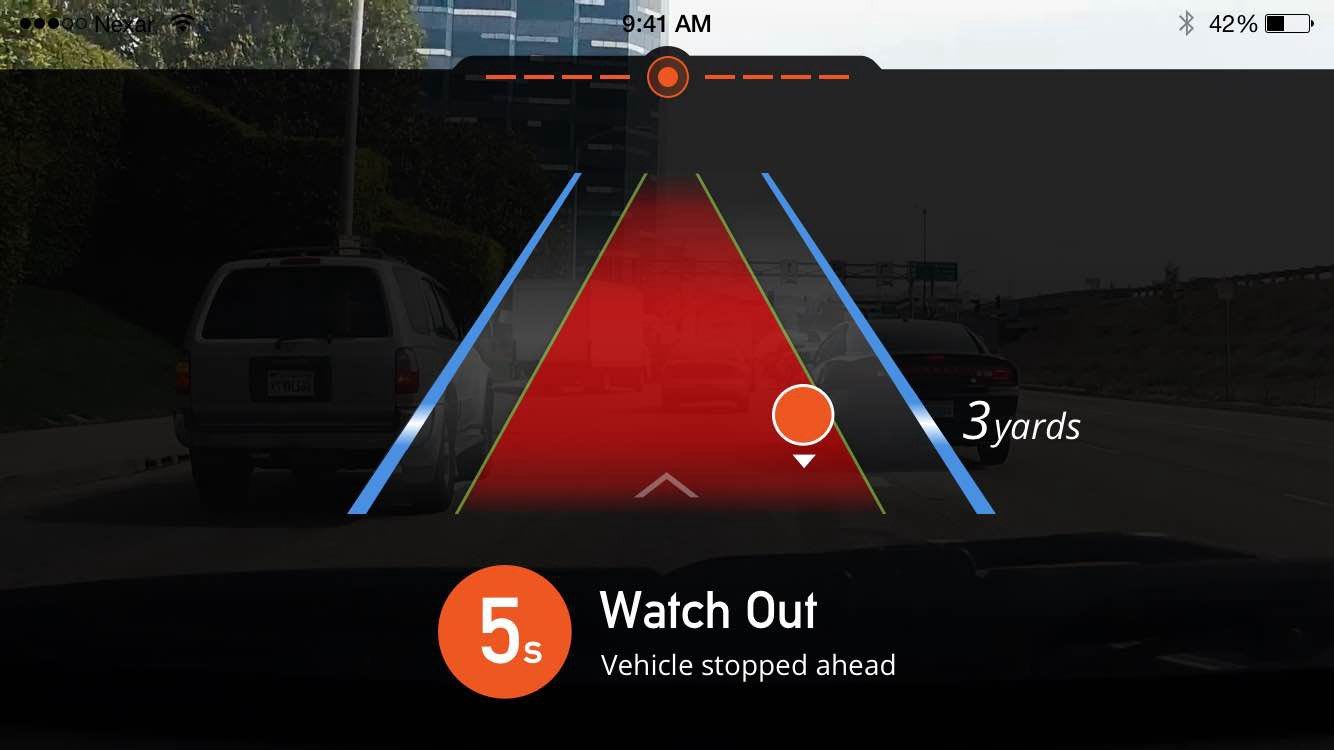The Nexar vehicle-to-vehicle network is live: we can reduce car crashes today

Today marks a new phase for Nexar, as we’re opening the world’s first realtime vehicle network. Starting today, all Nexar users are not driving alone anymore, but rather, are part of a massive sensor network, that detects and tracks everything that’s happening on the road, to predict and prevent collisions.
If we go back to February 3rd 2014, after years of research and talks with automotive makers, the National Highway Traffic Safety Administration put forward a plan for cars to communicate with each other and alert drivers of road hazards ahead. NHTSA hoped at the time that sometime in 2020 this vision of vehicle-to-vehicle communication would start to become a reality.
Automakers then forecasted it would take another five years for enough cars to be equipped with V2V technology to start to see safer roads and a sharp decline in road fatalities. To us, having to wait until 2025 in order to see safer roads, sounded like an awfully long, long, time.
Nexar brings this vehicle to vehicle (V2V) network which will warn you of collisions ahead, and give you as good, if not better, Forward Collision Warnings as the best high-end car on the market. Even if you’re driving a ’69 Mustang.

The best collision prevention sensor in the world is your eye. When not distracted, it is light years away from any other sensor in existence. But even your eye cannot see beyond your line of sight. If you’re driving behind a truck, and a vehicle ahead is doing a hard brake, you would not know about it until the truck just in front of you will start braking. That might be too late. So while your eye, and any other sensor we can come up with is important, it is still very limited in its capacity to help you in case of a dangerous situation.
In preventing car collisions, there is only one factor that matters. Time. If you’d take any collision that ever happened and provide enough early warning to the drivers involved, you could prevent it or at least dramatically reduce its’ impact. That’s where the Nexar network comes in: your vehicle tracks every car and other object on the road using our computer vision and sensor fusion technology running on your smartphone. When something dangerous is about to happen in front of you, Nexar will warn you, and through our network, it will also warn drivers that are a 100 feet behind you. You will get the same warnings from your peer Nexar drivers around you, so instead of settling for a 1–2 seconds warning you could get 4, 5 or even 8 seconds warning. Enough to assess the situation, slow down, or change lanes. We are starting with Forward Collision Warning, and we expect many other types of advanced warnings to follow in the future.
In essence, we are building the world’s “Ground Traffic Control Network”. Our belief is that this network will have the same impact Air Traffic Control had on planes in the sky — it will make vehicle collisions a thing of the past.
Car collisions are a huge and growing problem. Every year over 1.3 million people die on the roads across the world, and in the US alone, the societal cost of car collisions is estimated at close to $300 billion. What’s more, the rates of collisions and fatalities are growing around 10% year over year for the last five years.
Silicon valley’s solution to car collisions is the autonomous vehicle. Google is building one, and so are GM, Uber, Tesla and many other car makers. We love autonomous vehicles. We can’t wait to see them on the road, and we will contribute our fair share in accelerating this future in the coming years. Autonomous vehicles capture our imagination, because we imagine the world they will bring us. Freedom of looking for parking. Or keeping our eyes open on a night drive home. Ridding the world of huge parking lots. Removing commute anxiety. But when it comes to solving car collisions anytime soon, autonomous vehicles fall short.
An autonomous vehicle will (hopefully) cost anywhere between $20K and $50K. It will require trillions of dollars and decades of production to get penetration high enough to rid the world of collisions. In the next decade 13 million people will die on our roads. Probably over 20 million in the next two. We can make a real dent in these numbers starting this year if we rapidly connect our vehicles. In three years we can create a ‘new normal’. One where collisions are not an act of God, but rather, a handled problem.

Nexar’s solution to car collisions costs $7, and you can get it on Amazon: It’s a mount, on top of which you put your smartphone and install the free Nexar app.
It sounds a bit unrealistic to compare an app running on a smartphone to a full-on autonomous vehicle, but it was deemed equally unrealistic to compare a DSLR camera to a smartphone app, or a medical ECG equipment to a health app. Because as the Nexar network grows, it will know more, react better and protect you more than any individual car, autonomous or otherwise.
Right now, the Nexar network is strongest in San Francisco and NYC, where thousands of drivers are already connected, and from today they will start getting real-time warnings as they drive. You can also get the network running in your local neighborhood and your city by installing Nexar and telling your friends about it. Nexar is, and always will be, free. We are on a journey to make driving safer and we’d love it if you join.
Get the new Nexar version for iPhone


